Abstract
Two series of experiments were performed on rabbits to investigate the role of fixed C3 in the non-lytic destruction of red cells. In the first series, intravenous injection of a potentially lytic IgM cold antibody (anti-I) into C6-deficient rabbits caused a severe thrombocytopenia and neutropenia and a fall in haemoglobin concentration and PCV with only minimal haemoglobinaemia; all were of short duration. A sharp fall in plasma C3 concentration, the demonstration of C3 on the red cells and the occurrence of immune-adherence in vivo suggested that red cell-complement intermediates in the form EA(IgM) C1423 were present in the circulation at this time. Subsequently, when the fixed-C3 activity of the circulating red cells was markedly diminishing, the haemoglobin and PCV and platelet and neutrophil counts recovered towards the pre-injection values, indicating the sequestration rather than the acute destruction of these cells. In contrast to the findings in the C6-deficient rabbits, injection of the same IgM cold antibody into C3-depleted rabbits caused no significant haematological changes. In a second series of experiments, red cells in the form EC43(5) and EC4 were injected intravenously into C6-deficient, C3-depleted and normal rabbits. EC4 survived normally during the period of observation, whereas EC43(5) were removed exponentially (t½:1½–4 min) from the circulation at sites in the reticuloendothelial system. In the liver, the main site of sequestration, EC43(5) attached to Kupffer cells, where some were immediately ingested. With time, unphagocytosed EC43(5) returned to the circulation at a slow exponential rate (t½:25–100 min), apparently as damaged, spherocytic cells. It is suggested that the return of EC43(5) to the circulation from sites of attachment on fixed macrophages is due to the progressive in vivo inactivation of fixed-C3. It would therefore appear that the presence of fixed C3 in an active form is essential for the non-lytic sequestration and damage of red cells which have been exposed to IgM cold antibody.
Full text
PDF
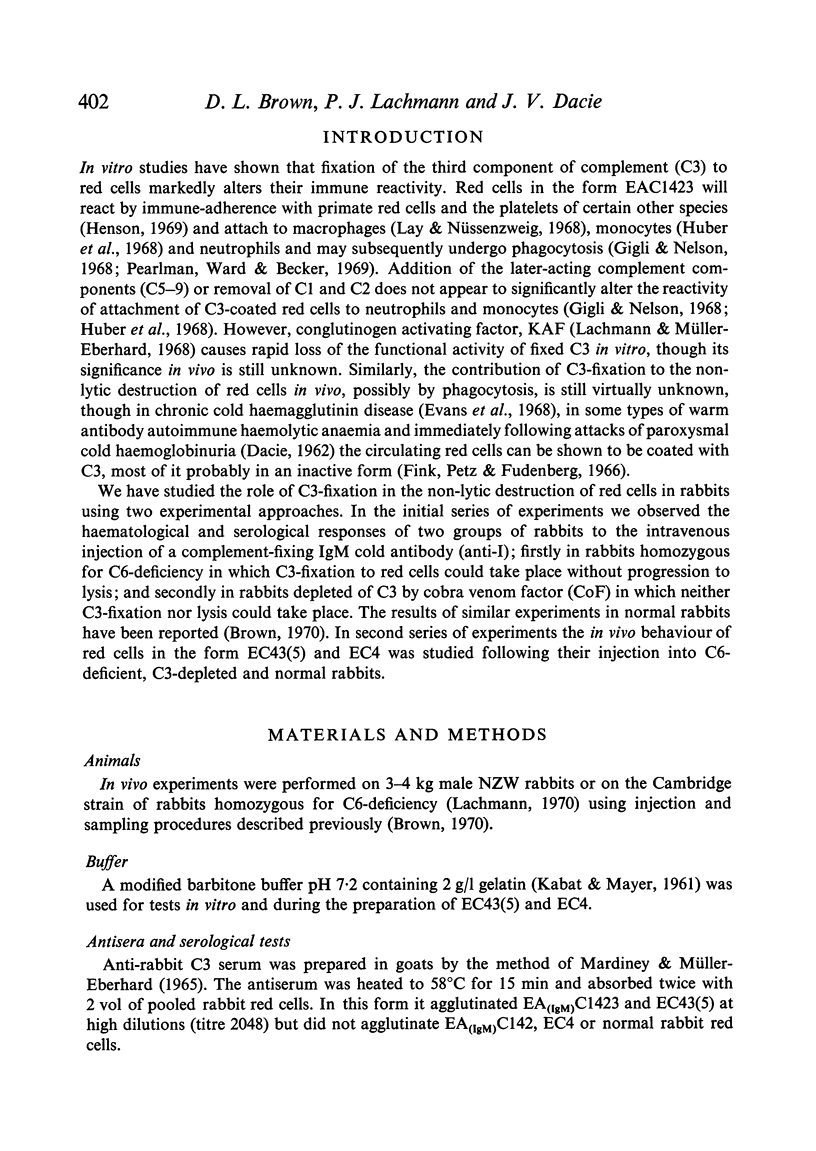

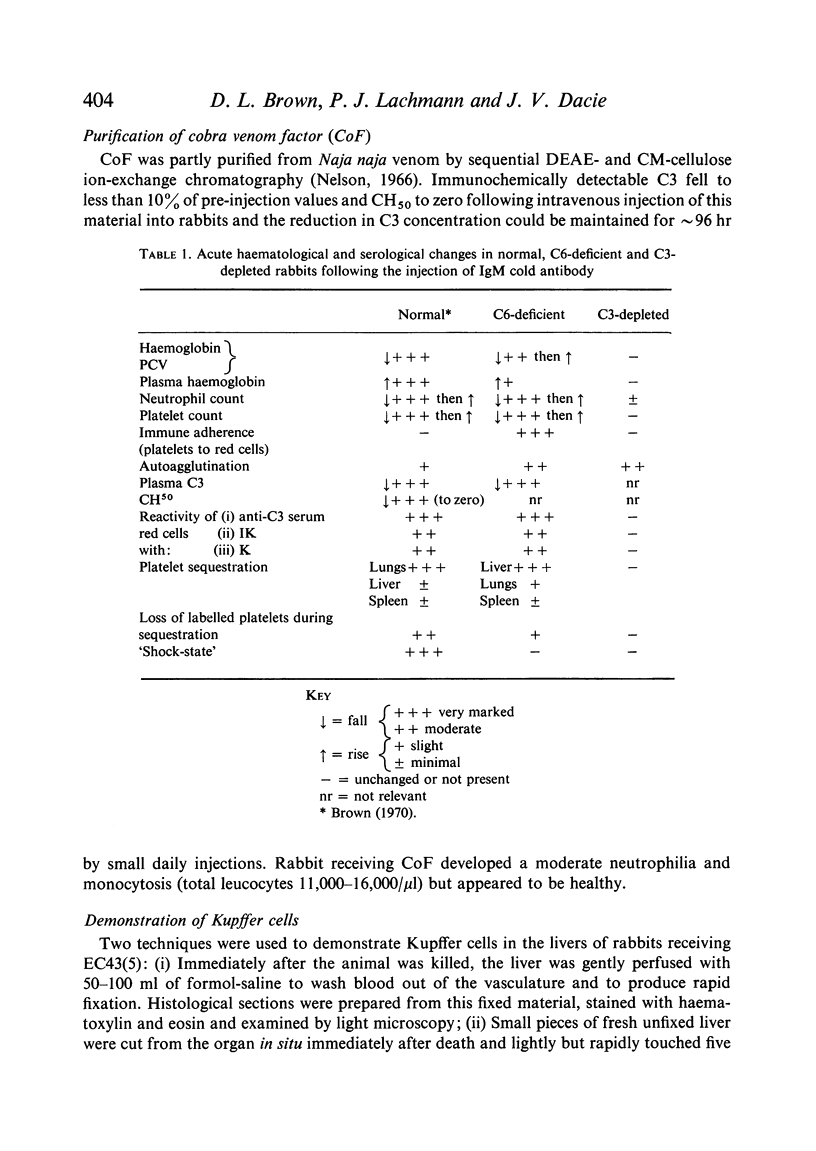
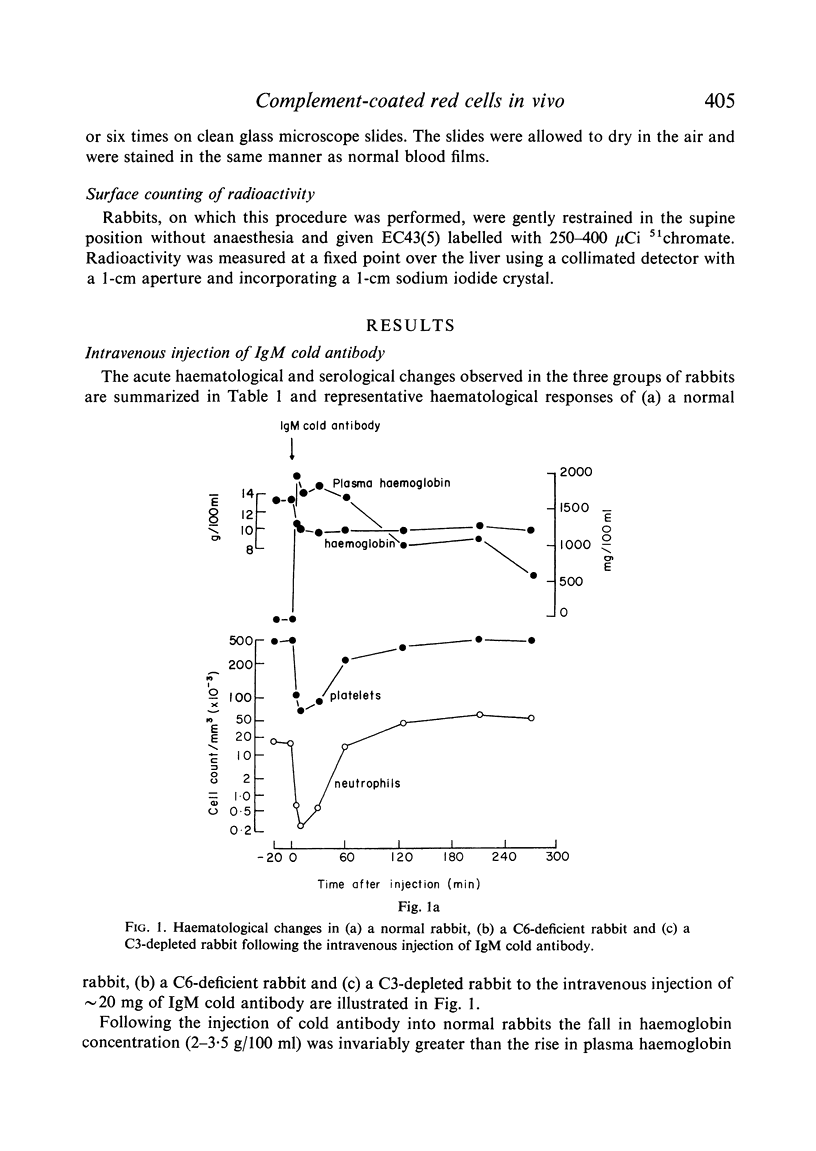
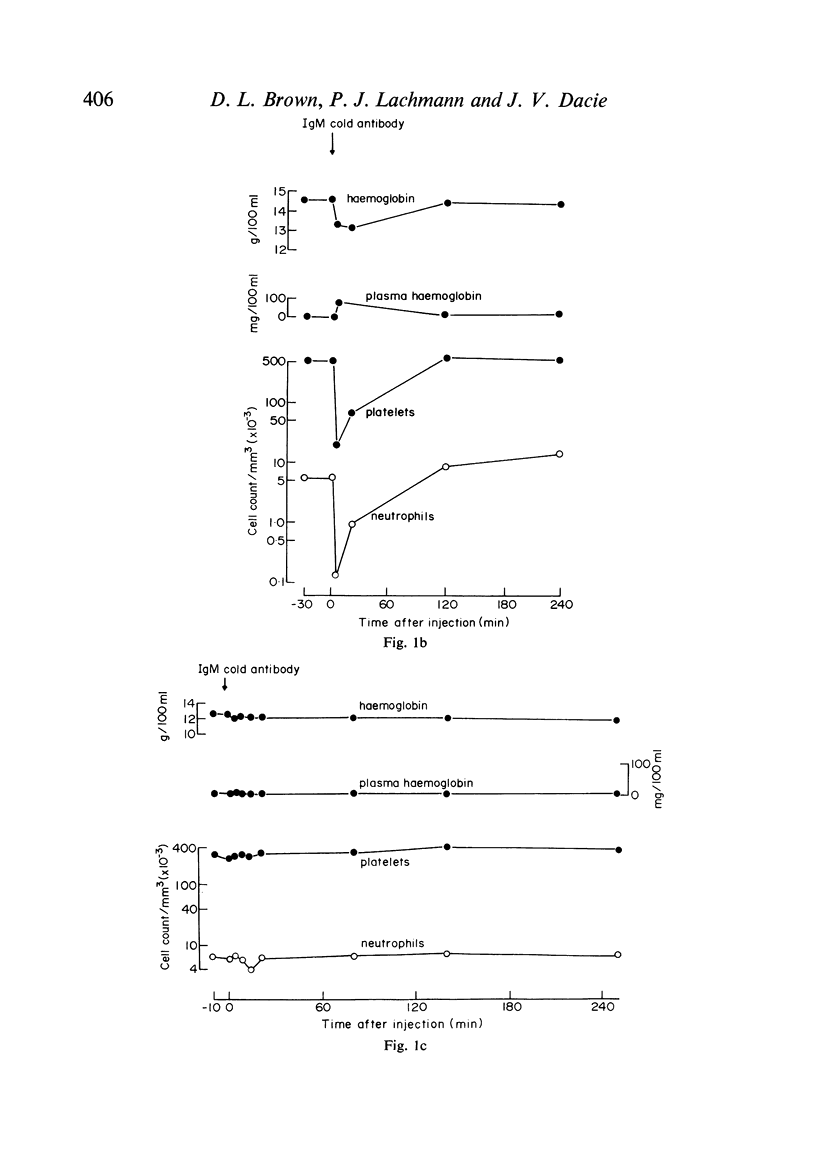

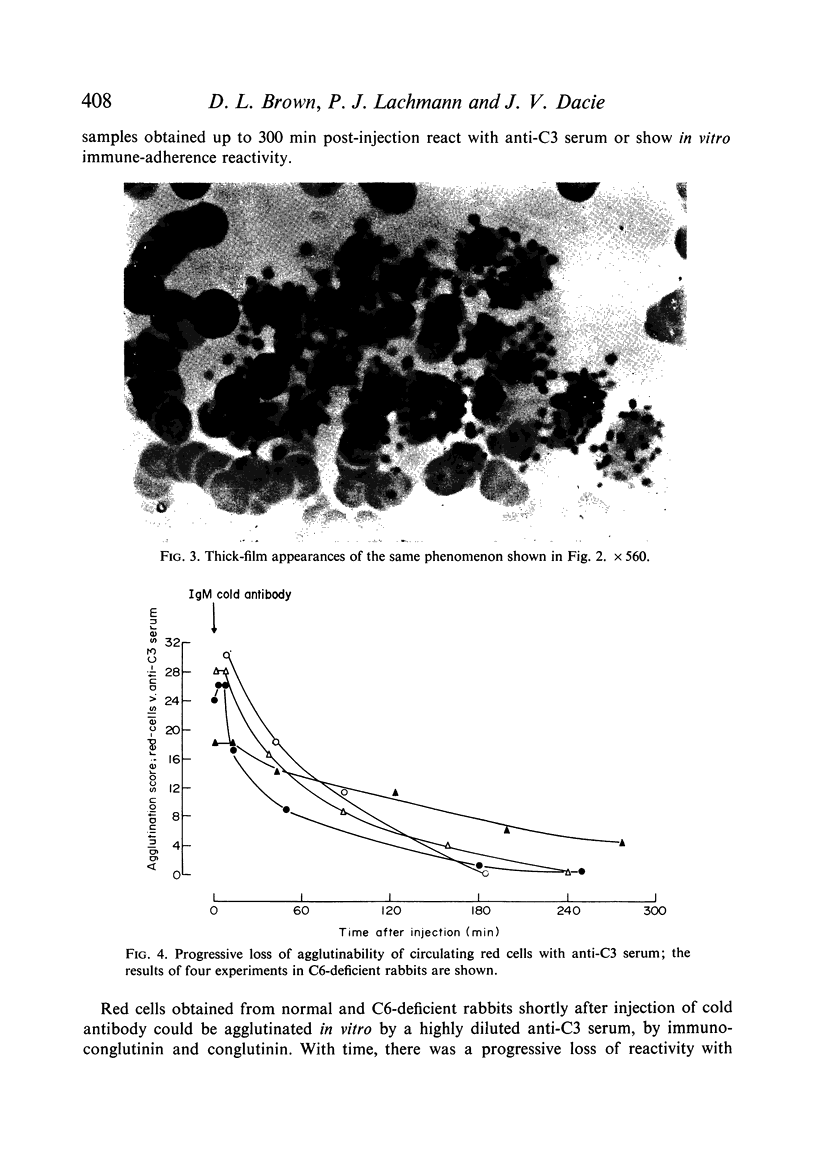
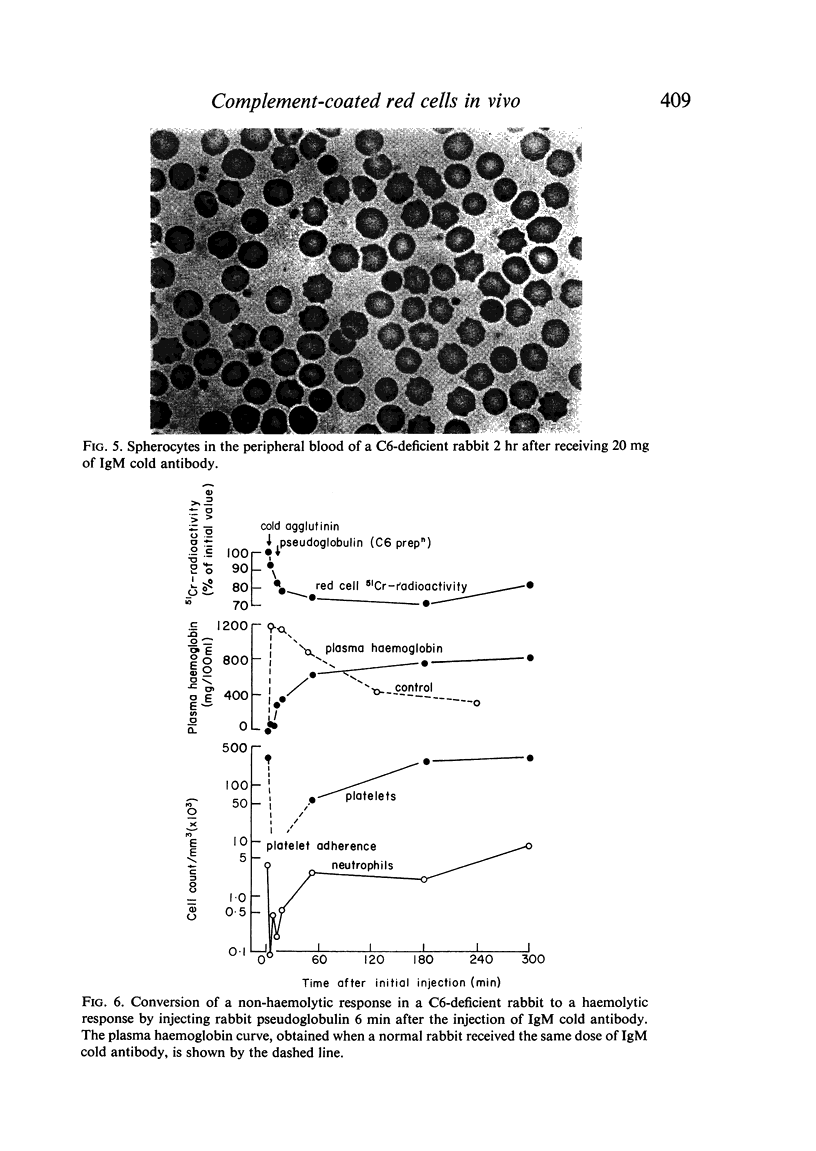

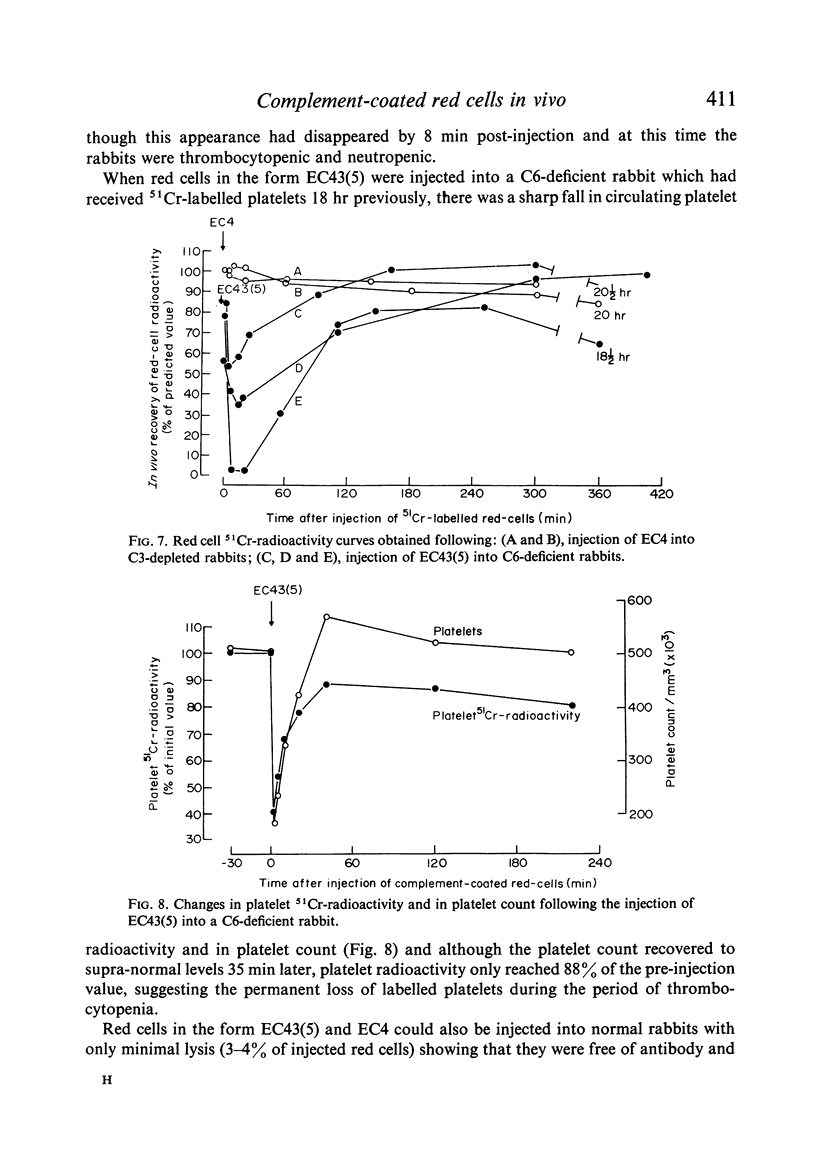
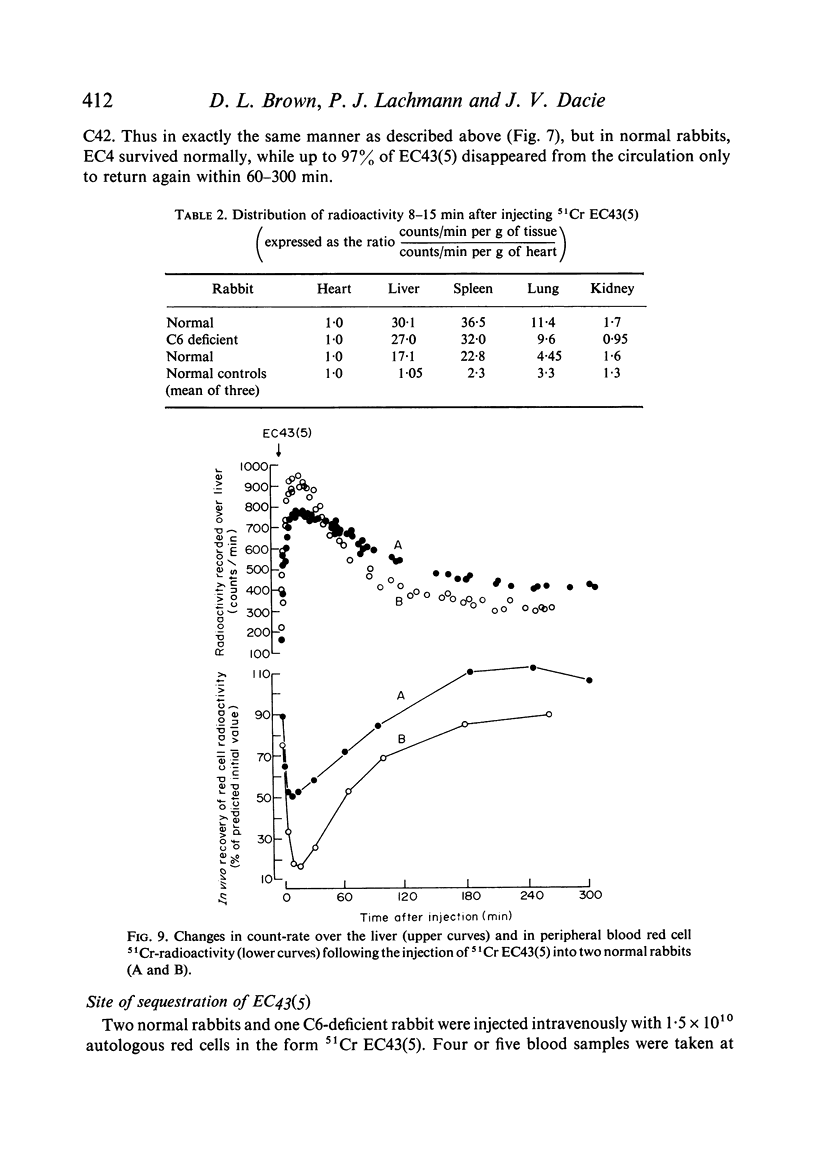

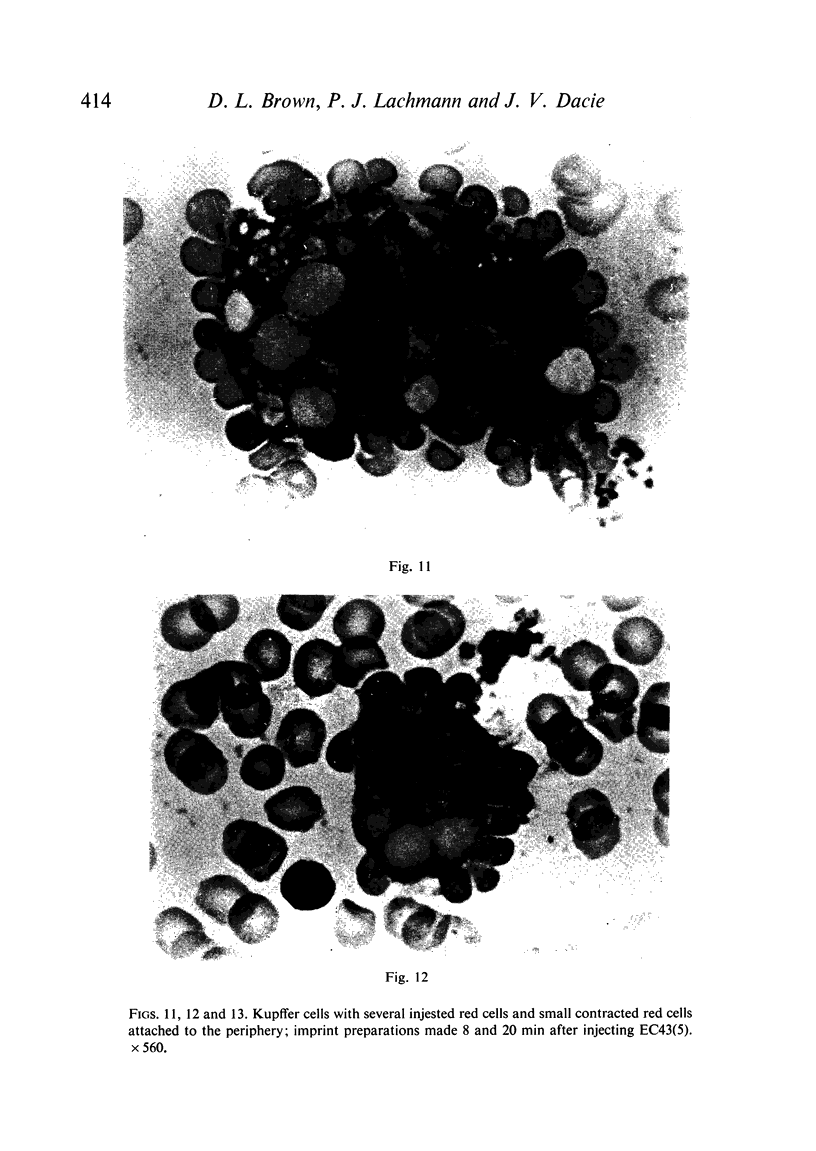
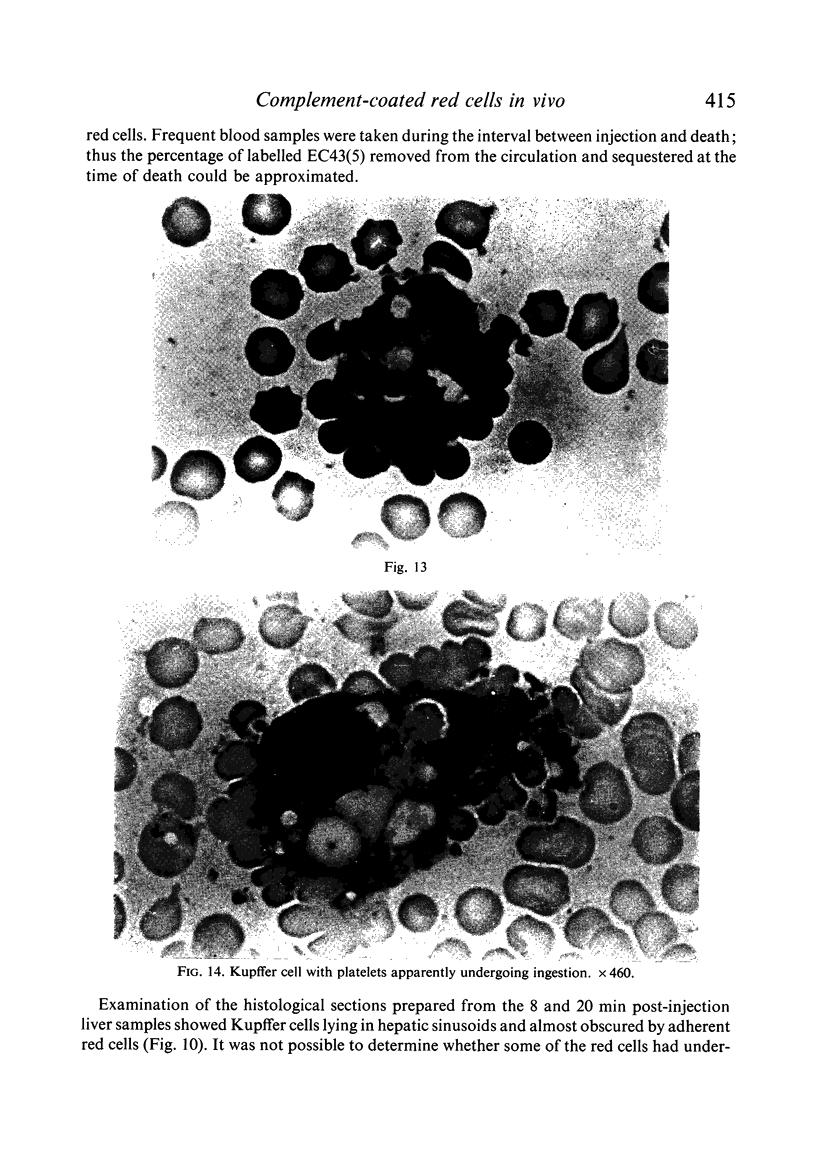

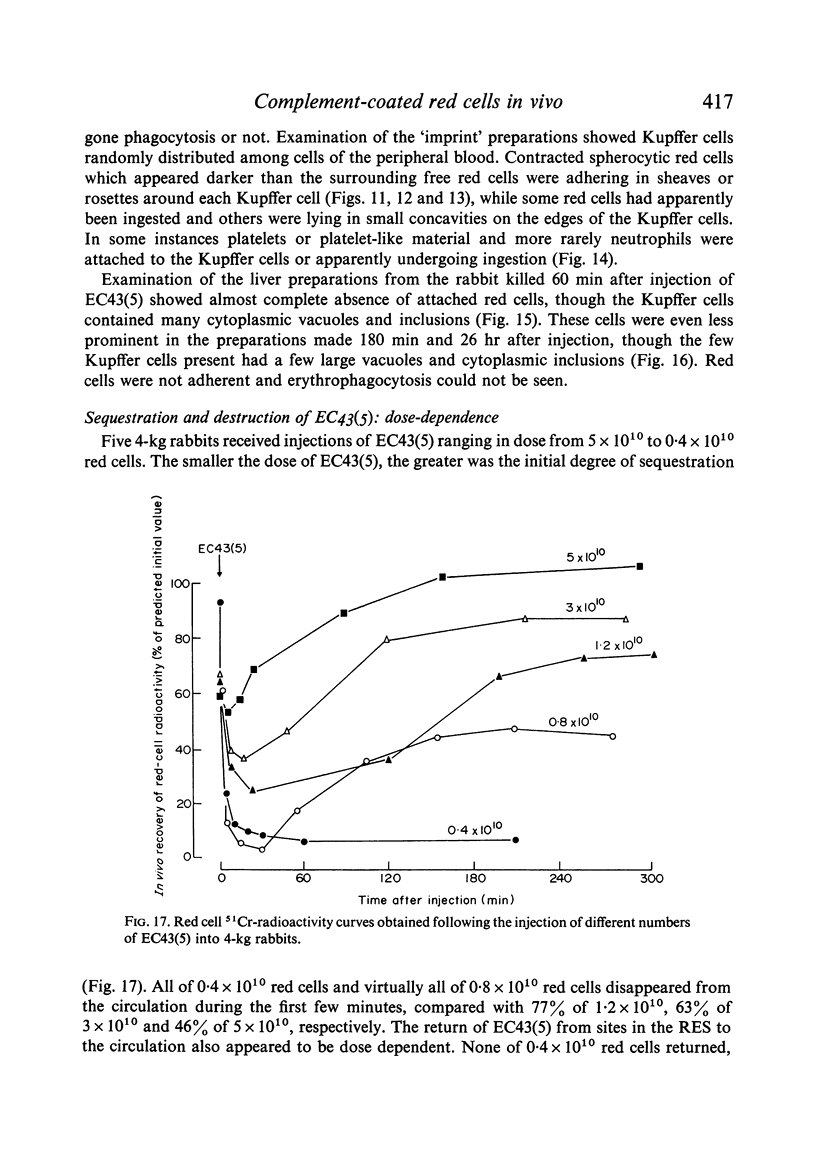
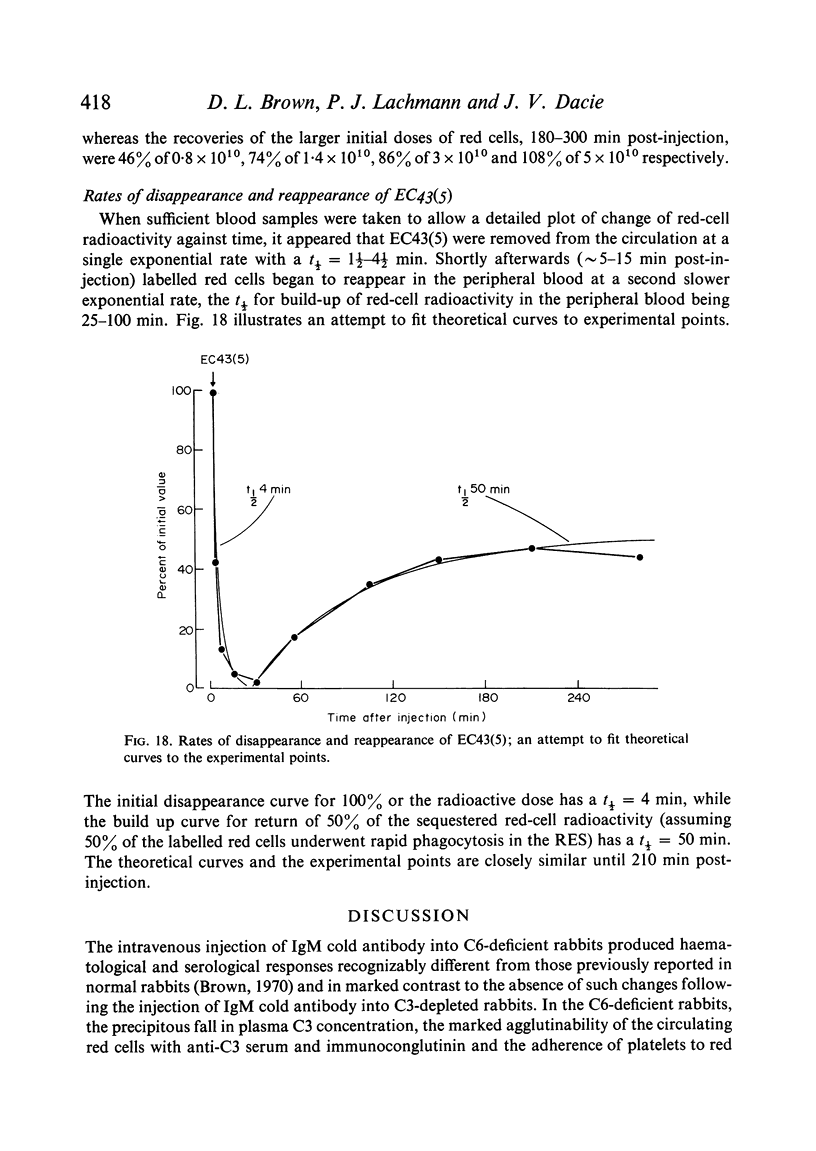


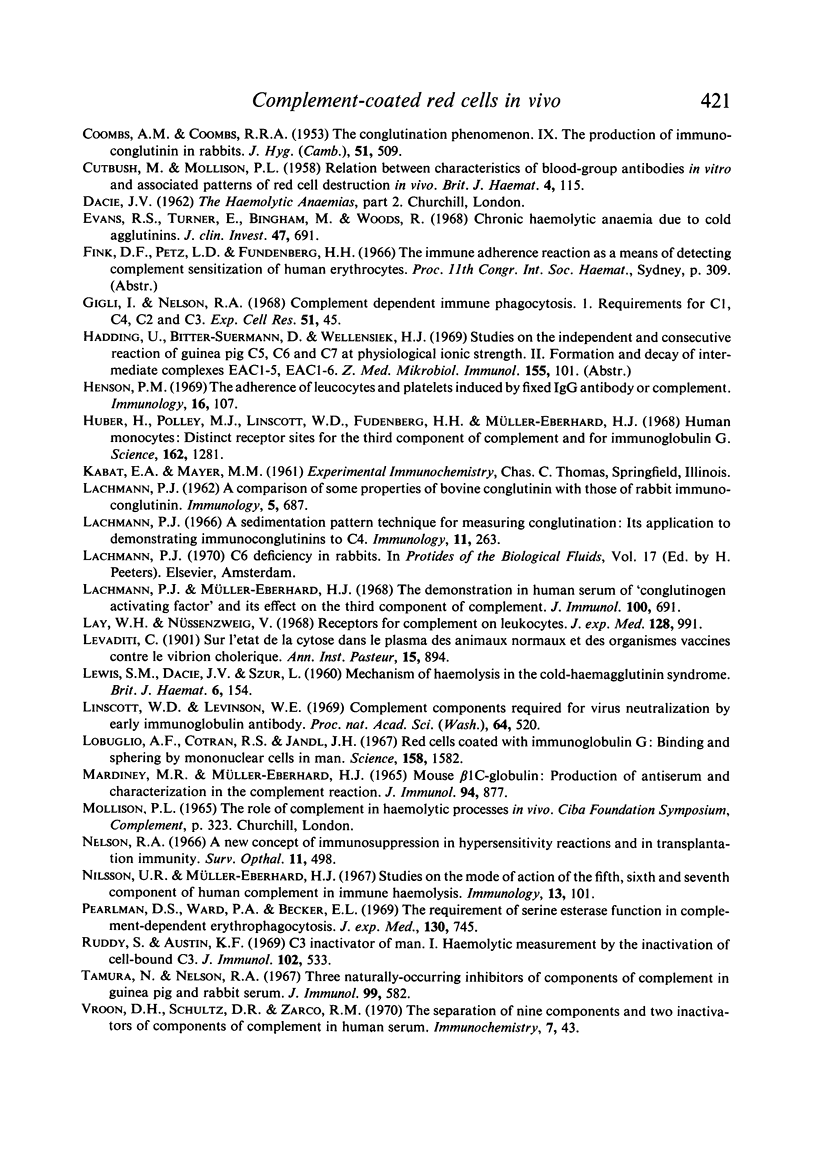
Images in this article
Selected References
These references are in PubMed. This may not be the complete list of references from this article.
- Burton M. S., Mollison P. L. Effect of IgM and IgG iso-antibody on red cell clearance. Immunology. 1968 Jun;14(6):861–878. [PMC free article] [PubMed] [Google Scholar]
- COOMBS A. M., COOMBS R. R. The conglutination phenomenon. IX. The production of immuno-conglutinin in rabbits. J Hyg (Lond) 1953 Dec;51(4):509–531. doi: 10.1017/s0022172400036792. [DOI] [PMC free article] [PubMed] [Google Scholar]
- CUTBUSH M., MOLLISON P. L. Relation between characteristics of blood-group antibodies in vitro and associated patterns of redcell destruction in vivo. Br J Haematol. 1958 Apr;4(2):115–137. doi: 10.1111/j.1365-2141.1958.tb03843.x. [DOI] [PubMed] [Google Scholar]
- Evans R. S., Turner E., Bingham M., Woods R. Chronic hemolytic anemia due to cold agglutinins. II. The role of C' in red cell destruction. J Clin Invest. 1968 Apr;47(4):691–701. doi: 10.1172/JCI105764. [DOI] [PMC free article] [PubMed] [Google Scholar]
- Gigli I., Nelson R. A., Jr Complement dependent immune phagocytosis. I. Requirements for C'1, C'4, C'2, C'3. Exp Cell Res. 1968 Jul;51(1):45–67. doi: 10.1016/0014-4827(68)90158-4. [DOI] [PubMed] [Google Scholar]
- Henson P. M. The adherence of leucocytes and platelets induced by fixed IgG antibody or complement. Immunology. 1969 Jan;16(1):107–121. [PMC free article] [PubMed] [Google Scholar]
- Huber H., Polley M. J., Linscott W. D., Fudenberg H. H., Müller-Eberhard H. J. Human monocytes: distinct receptor sites for the third component of complement and for immunoglobulin G. Science. 1968 Dec 13;162(3859):1281–1283. doi: 10.1126/science.162.3859.1281. [DOI] [PubMed] [Google Scholar]
- LACHMANN P. J. A comparison of some properties of bovine conglutinin with those of rabbit immuno-conglutinin. Immunology. 1962 Nov;5:687–705. [PMC free article] [PubMed] [Google Scholar]
- Lachmann P. J. A sedimentation pattern technique for measuring conglutination: its application to demonstrating immunoconglutinins to C'4. Immunology. 1966 Sep;11(3):263–271. [PMC free article] [PubMed] [Google Scholar]
- Lachmann P. J., Müller-Eberhard H. J. The demonstration in human serum of "conglutinogen-activating factor" and its effect on the third component of complement. J Immunol. 1968 Apr;100(4):691–698. [PubMed] [Google Scholar]
- Lay W. H., Nussenzweig V. Receptors for complement of leukocytes. J Exp Med. 1968 Nov 1;128(5):991–1009. doi: 10.1084/jem.128.5.991. [DOI] [PMC free article] [PubMed] [Google Scholar]
- Linscott W. D., Levinson W. E. Complement components required for virus neutralization by early immunoglobulin antibody. Proc Natl Acad Sci U S A. 1969 Oct;64(2):520–527. doi: 10.1073/pnas.64.2.520. [DOI] [PMC free article] [PubMed] [Google Scholar]
- LoBuglio A. F., Cotran R. S., Jandl J. H. Red cells coated with immunoglobulin G: binding and sphering by mononuclear cells in man. Science. 1967 Dec 22;158(3808):1582–1585. doi: 10.1126/science.158.3808.1582. [DOI] [PubMed] [Google Scholar]
- MARDINEY M. R., Jr, MUELLER-EBERHARD H. J. MOUSE BETA-1C-GLOBULIN: PRODUCTION OF ANTISERUM AND CHARACTERIZATION IN THE COMPLEMENT REACTION. J Immunol. 1965 Jun;94:877–882. [PubMed] [Google Scholar]
- Nelson R. A., Jr A new concept of immunosuppression in hypersensitivity reactions and in transplantation immunity. Surv Ophthalmol. 1966 Aug;11(4):498–505. [PubMed] [Google Scholar]
- Nilsson U. R., Müller-Eberhard H. J. Studies on the mode of action of the fifth, sixth and seventh component of human complement in immune haemolysis. Immunology. 1967 Jul;13(1):101–117. [PMC free article] [PubMed] [Google Scholar]
- Pearlman D. S., Ward P. A., Becker E. L. The requirement of serine esterase function in complement-dependent erythrophagocytosis. J Exp Med. 1969 Oct 1;130(4):745–764. doi: 10.1084/jem.130.4.745. [DOI] [PMC free article] [PubMed] [Google Scholar]
- Ruddy S., Austen K. F. C3 inactivator of man. I. Hemolytic measurement by the inactivation of cell-bound C3. J Immunol. 1969 Mar;102(3):533–543. [PubMed] [Google Scholar]
- Tamura N., Nelson R. A., Jr Three naturally-occurring inhibitors of components of complement in guinea pig and rabbit serum. J Immunol. 1967 Sep;99(3):582–589. [PubMed] [Google Scholar]
- Vroon D. H., Schultz D. R., Zarco R. M. The separation of nine components and two inactivators of components of complement in humansserum. Immunochemistry. 1970 Jan;7(1):43–61. doi: 10.1016/0019-2791(70)90029-7. [DOI] [PubMed] [Google Scholar]












